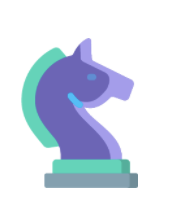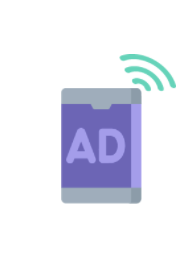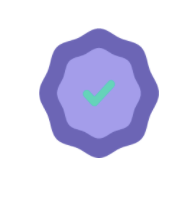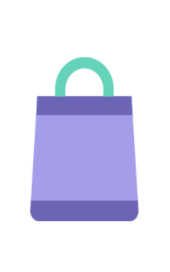How to Conduct Market Research on a Product?
Understanding consumer behaviour and preferences is crucial for businesses to thrive in the ever-changing market research landscape.
Businesses use focus groups and usability testing to analyse products and user experiences in order to make strategic decisions. Focus groups involve gathering a small group of people to discuss a product or experience. Usability testing involves observing how users interact with a product to identify any issues or areas for improvement. These methods play a key role in shaping decisions based on consumer feedback.
In this article, we will explore the complexities of market research. It will cover product research, organising focus groups, estimating research costs, and differentiating between focus groups and usability testing.
Let’s explore these topics to enhance your market research strategies and drive business success.
Definition of Objectives and Target Audience
Before conducting market research on a product, it’s crucial to define clear objectives. For instance, if you aim to launch a new line of eco-friendly cosmetics, your objectives might include understanding consumer perceptions of sustainability in the beauty industry. Define your target audience based on demographics, psychographics, and behaviours to ensure you gather relevant insights.
Methodologies and Data Collection
Utilise a mix of methodologies such as surveys, interviews, focus groups, and observational studies to collect comprehensive data. For example, conduct online surveys to gather quantitative data on consumer preferences and behaviours. Combine this with detailed interviews to explore why people like or dislike current products on the market.
Data Analysis and Insights
Use data analysis tools like SPSS or R for quantitative data and thematic analysis for qualitative data. Look for patterns, trends, and outliers in the data.

By using sentiment analysis tools on social media data, you can understand how consumers perceive your product. You can also gain insights into how they perceive your competitors in the market.
Sentiment analysis tools help you analyse the opinions and attitudes expressed by consumers on social media. This information can be valuable for making informed decisions about your product and marketing strategies.
Conclusions and Implementation
Based on your analysis, draw conclusions that lead to actionable insights. For example, if your research reveals a growing demand for sustainable packaging, consider integrating
recyclable materials into your product design. Implement these findings in your product development, marketing strategies, and customer engagement efforts to align with consumer preferences.

How Do You Put Together an Effective Focus Group?
Participant Recruitment
When looking for people to join a focus group, it’s a good idea to use a screening questionnaire. This will help ensure that the participants fit the profile of your target audience. For example, if you’re conducting a focus group on a new fitness app, recruit individuals who are active gym-goers or frequent users of health and fitness apps.
Get in touch with us today to discover how Bolt’s digital insight solutions and AI-powered qualitative research can help you gain the market intelligence you need to help supercharge your growth.
Discussion Guide and Facilitation
Prepare a structured discussion guide with open-ended questions that encourage participants to share their experiences and opinions. A good moderator is essential for a smooth session. They ensure everyone has an opportunity to share their thoughts.
During a focus group about a new meal kit service, the moderator can guide the conversation. The topics discussed may include convenience, pricing, and food preferences. This helps gather valuable insights from participants. The moderator can ensure that the discussion stays on track.
Analysis and Reporting
Capture insights from the focus group session through note-taking, audio recordings, or video recordings. Analyse the discussions to identify common themes and divergent opinions. Create a detailed report summarising key findings, participant feedback, and recommendations for product improvements or marketing strategies.

Follow-Up and Action
After the focus group, consider conducting follow-up surveys or interviews to delve deeper into specific insights. Use the gathered data to refine product features, adjust marketing messaging, or address customer concerns. By taking proactive steps based on focus group feedback, you can enhance your product’s appeal and user experience.
How Much Does Market Research Cost Per Response?
Market research costs per response can vary depending on several factors, including:
- Research Methodology: Online surveys and email questionnaires are cost-effective compared to in-person interviews or focus groups.
- Sample Size: Larger sample sizes may increase costs per response due to the need for more participants and data analysis.
- Target Audience: Recruiting niche or hard-to-reach demographics can drive up costs per response.
- Data Analysis Tools: Utilising advanced analytics tools or services can add to the overall research costs.
- Complexity of Study: Multi-stage research projects or longitudinal studies may incur higher costs per response.
For example, conducting an online survey with a sample size of 1,000 respondents might cost between $1 to $5 per response. In contrast, organising in-depth interviews with 20 participants could cost $50 to $200 per response. It’s important to think about the cost of each response and compare it to the valuable information gained. This will help determine if the research expense is worth it.
8 Differences Between Focus Groups and Usability Testing
When navigating the landscape of market research methodologies, understanding the distinctive characteristics between focus groups and usability testing is paramount for businesses seeking to optimise their research approaches and glean actionable insights.
| Aspect | Focus Groups | Usability Testing |
| Purpose | Aim to gather qualitative insights and opinions through group discussions. | Focused on evaluating user interactions and user experience with a product. |
| Participants | Include a diverse group to gather varied perspectives and opinions. | Involves individual users to assess their interactions with the product. |
| Moderation | Led by a moderator guiding discussions and encouraging participation. | Typically facilitated by an observer noting user behaviours and interactions. |
| Feedback Type | Provide qualitative feedback on opinions, perceptions, and attitudes. | Offers quantitative and qualitative insights into user behaviour and product usability. |
| Setting | Conducted in a group setting to promote discussion and idea generation. | Takes place in controlled environments to focus on individual interactions with the product. |
| Focus | Discussions encompass various aspects related to the product or service. | Concentrates on specific usability aspects of the product. |
| Timing | Single event to gather immediate feedback from participants. | Can be conducted iteratively during different stages of product development. |
| Outcome | Offer insights on preferences, opinions, and perceptions of the target audience. | Identify usability issues, user preferences, and areas for product improvement based on user interactions. |
In this comprehensive guide, we explored key aspects of market research, focusing on the intricacies of conducting product research, organising effective focus groups, estimating research costs, and highlighting the differences between focus groups and usability testing.
By defining objectives, selecting appropriate methodologies, and analysing data effectively, businesses can gather valuable insights to inform their product development and marketing strategies. Understanding the nuances of focus groups and usability testing can help businesses optimise user experiences and enhance product offerings. By considering these key elements, businesses can leverage market research to make informed decisions that drive growth and success in today’s competitive market landscape.












